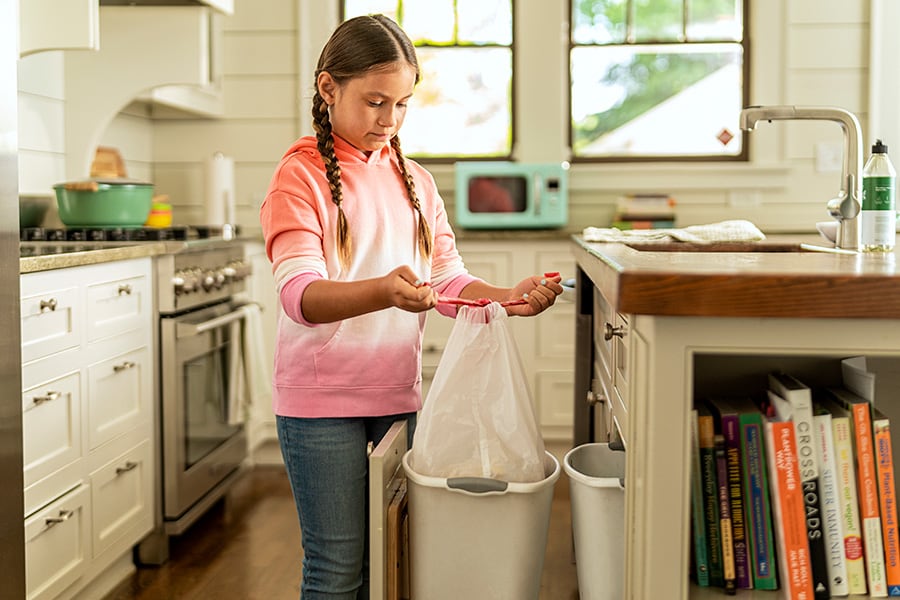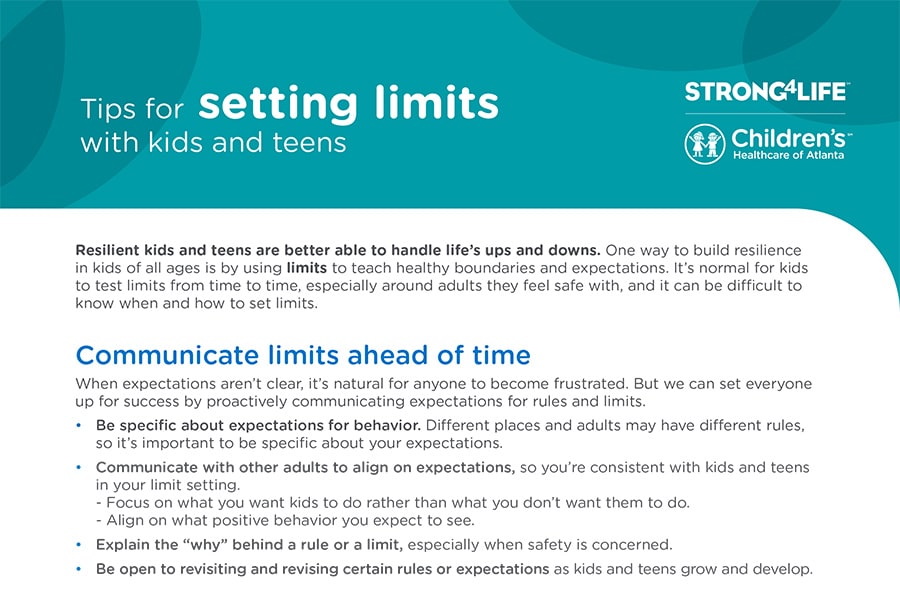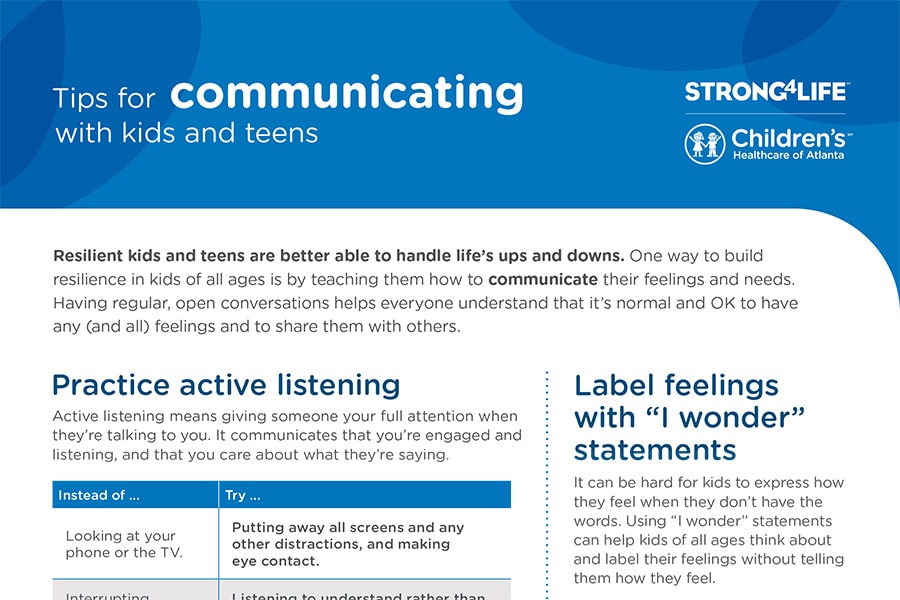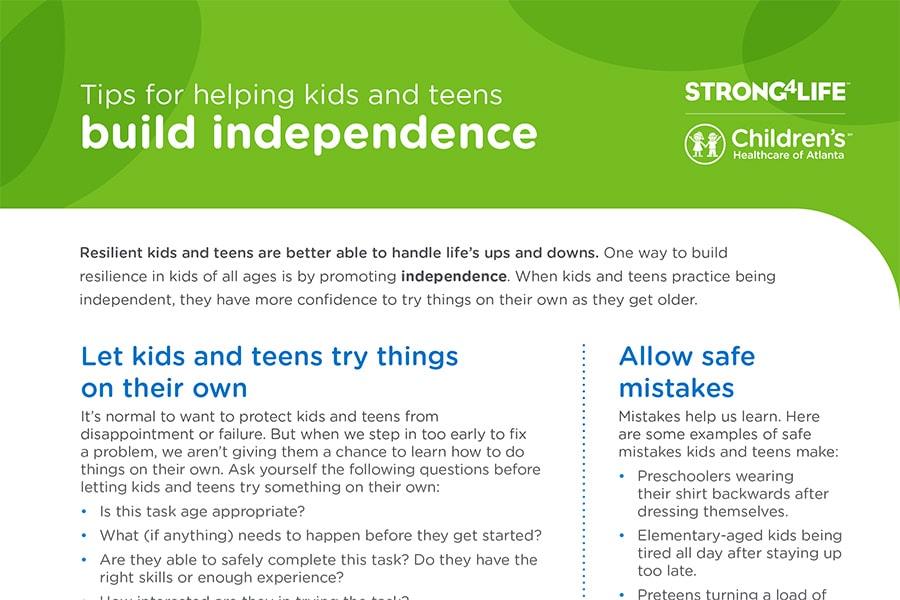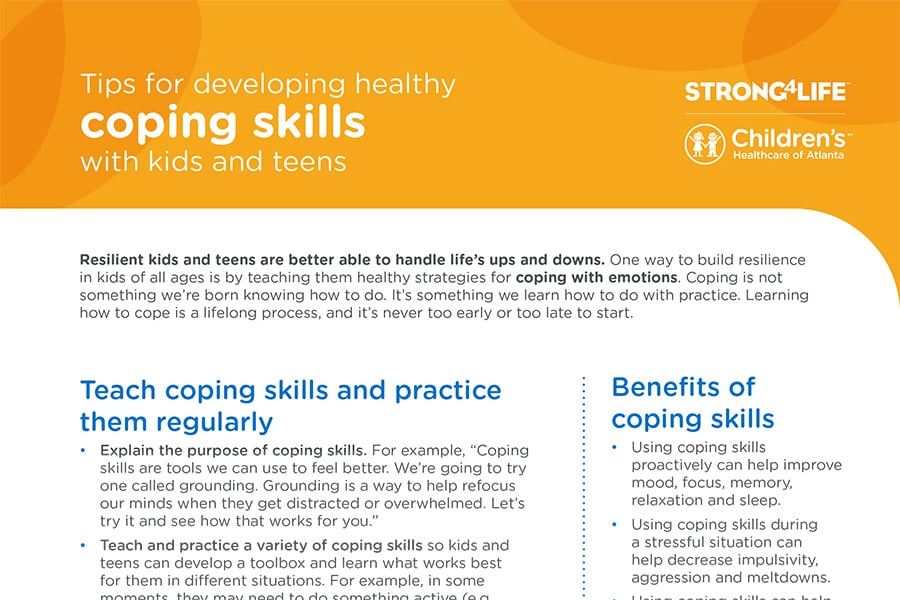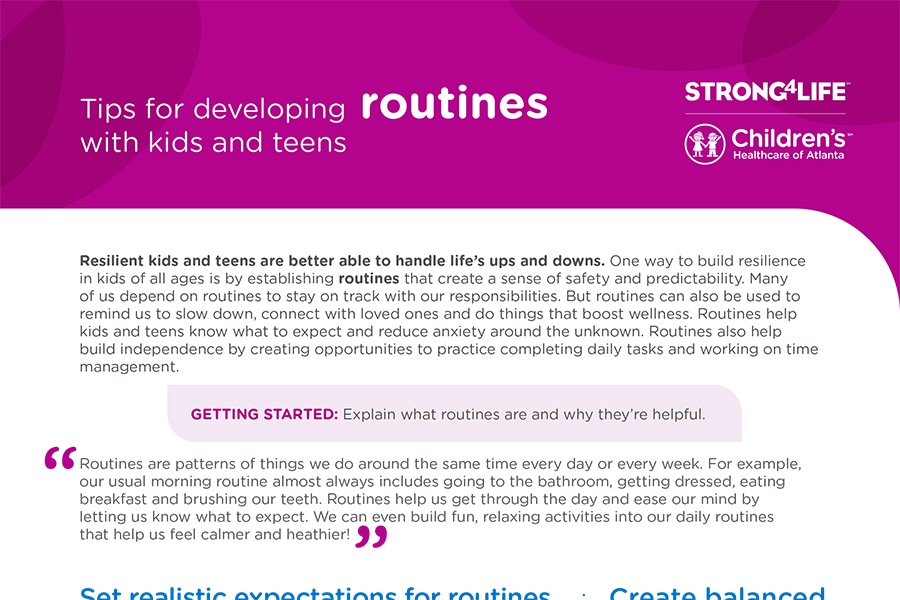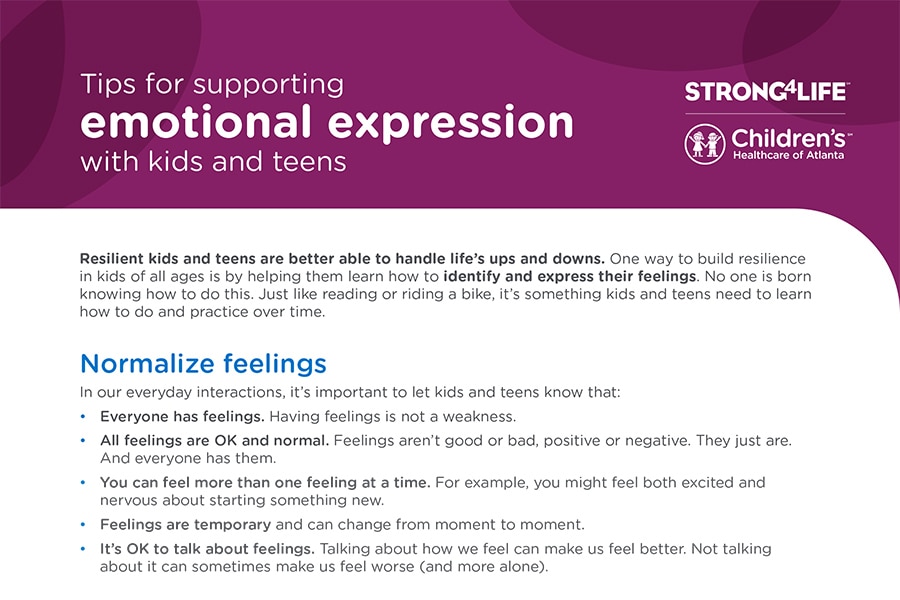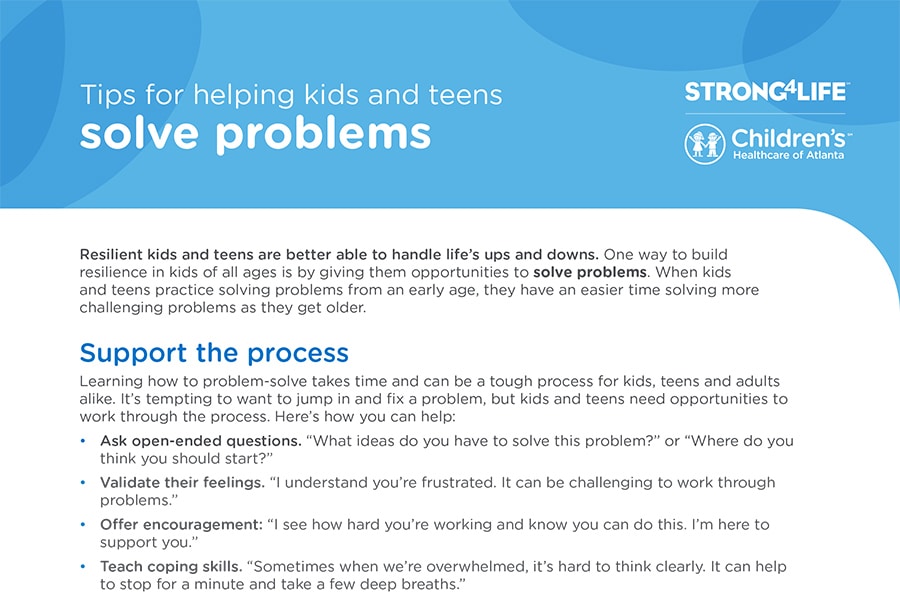Teaching Kids & Teens How to Solve Problems

We’ve all been there. Your child is staring at you, expecting you to jump in and fix it for them. You see them struggling and you want to make things better. So, what’s the big deal? Why not just do it? In these moments, as hard as it is, it’s important to step back and think about the long term. If we want kids to grow up to be adults who can solve problems and work through challenges, we have to give them opportunities to practice when they’re young. Read on to learn how to build resilience through teaching kids and teens problem-solving skills.
In this article:

How to help kids and teens learn to solve problems without fixing it for them
Learning how to problem solve takes patience and can be tough for everyone. It can be tempting to jump in and fix a problem, but kids and teens need opportunities to work through the process. Here’s how we can help without fixing it for them:
- Ask open-ended questions. “What ideas do you have to solve this problem?” “Where do you think you should start?”
- Validate their feelings. “I understand you’re frustrated. It can be challenging to work through problems.”
- Offer encouragement. “I see how hard you’re working. I know you can do this, and I’m here to support you.”
- Teach coping skills. “Sometimes when we’re overwhelmed, it’s hard to think clearly. It can help to stop for a minute and take a few deep breaths.”
- Encourage critical thinking. “What do you think you could do differently?” “What do you think someone else might do to solve this problem?”
- Talk them through it. “It sounds like you want some help. I’ll share how I might solve this problem, and then you tell me what you think.”
How to develop kids’ and teens’ confidence to solve problems on their own
It’s common to feel confused or frustrated by kids’ and teens’ behavior and ask why they did something. But asking “why” can make them feel defensive or unsure of how to answer. Instead, try asking “how” questions that show we’re curious and encourage them to practice problem-solving. This can develop their confidence and help them see themselves as capable of figuring things out on their own. For example:
| Instead of … | Try … |
|---|---|
| “Why did you do that?” | “How can we solve this problems?” |
| “How can we work on this together?” | |
| “How can we prevent this from happening in the future?” |
How to allow safe mistakes and natural consequences with kids and teens
Kids and teens will make mistakes as they practice solving problems on their own. As hard as that may be to watch, it’s important to provide support and let them learn from safe mistakes instead of telling them what to do. One way kids can learn from their mistakes is by experiencing natural consequences. For example:
| If … | Then … |
|---|---|
| You spread a rumor about someone … | People may not trust you anymore. |
| You take a long time to get ready … | There will be less time for the next activity. |
| You refuse to wear a raincoat when it’s raining … | You’re going to get wet. |
| You don’t ask for help when you’re struggling with an assignment … | You may not get the grade you wanted. |
What to say to kids and teens instead of "be careful"
If we want kids and teens to navigate the world, think for themselves and stay safe, we have to give them opportunities to develop these skills—especially while we’re there for guidance. As kids learn, it’s common for adults to say “be careful” a lot. But the truth is, these words aren’t very effective. They can leave kids feeling confused, scared or anxious because they don’t give clear directions. And hearing “be careful” too much can affect kids’ confidence and ability to try new things. Instead, try:
- Building their awareness. “Does your body feel safe doing that?” “Notice if you feel uncertain or uncomfortable.” “Pay attention to how slippery those rocks are.”
- Offering advice and support. “There’s no need to rush. Slow down and take your time.” “What if you tried using both hands instead?” “I’m right here if you need me.”
- Encouraging them to think critically. “If you go up there, how you will get back down?” “I wonder what you think will happen if you do that.” “How will you figure that out?”
Safety note: Avoiding the words “be careful” doesn’t mean letting kids get into dangerous situations. It’s up to the adults to monitor safety, which may mean redirecting or removing them from a risky situation. For example:
- “Playing on that is unsafe because I can see that it’s broken. Let’s try playing over here instead.”
- “It’s getting cold outside. You can either put on a jacket and stay outside, or you can do something inside instead.”

How to be patient when teaching kids and teens problem-solving skills
Learning to solve problems doesn’t happen overnight—it’s an ongoing process throughout our lives. Even though it may feel faster and easier to jump in and figure it out for them, know that kids and teens need safe opportunities to practice working through problems. This can build their confidence, making them more resilient and independent. Remember: kids don’t need us to fix it for them; they just need us to be there for guidance and support.

